|
It's been 10 years since the second iteration of Relic's famed gritty World War 2 RTS Company of Heroes released and finally the third game is here with new features, factions and for the first time a console edition. a PC port then, how's the console controls? For the most part, it's a fairly successful carry over, utilising the 'press LT' to show options wheel that most RTS games use for console. We found nearly all the commands we wanted were easy to access and there weren't too many to remember. That said, we did have some issues with selection as A both selects and deselects units (click on empty terrain), except in some circumstances when it's not and B deselects the order - it would have been simpler to stick to the normal A to select B to deselect formula. Relatedly we found unit selection could be oversensitive and a single click would select multiple units without our intention. There's also no quick way to jump around the map for console either, and we couldn't work out how to chain orders when playing online or outside of Tactical Pause. One jarring act of laziness is that you can't remap any of the controller buttons, but a full keyboard remap option is available. Well not quite ideal, but what's it like to play?One thing this game has going for it is that it's an exciting RTS to play by virtue of the amount of work that's gone into the visuals and environment interaction (or more aptly, destruction). The graphics by and large are decent but the main focus is the chaos of battle: Explosions kick up huge amounts of dust and debris, almost all scenery can be reduced to rubble and after a lengthy battle the ground will be mostly craters and blood stains (the game does not shy away from showing violent deaths) which unlike most games do not fade so the end of a match is a messy sight. Infantry animations have been improved since the previous game and running, vaulting and such all looks pretty smooth and natural. The AI performs fairly well for the most part, but some of the path-finding is a bit wonky and we frequently found our tanks advancing into combat facing backwards negating any armour advantage. With regards to the enemy AI it's not the smartest in terms of flanking but it makes up for it in aggression – even in a standard difficulty skirmish we found ourselves swamped with enemy attacks within minutes unable to break out or build up forces. Like most RTS games there is an element of RNG to combat which helps prevent instant death but can also lead to some almost comically long battles with troops metres apart missing constantly (think that Viva La Dirt League skit). ...there was a bit of dubious tone discrepancy with gameplay being us fighting for the Germans while the cutscenes tell us about the awful things the Germans are doing... Is there much content?There's three main gameplay modes to choose from: the newly added dynamic campaign for Italy, a standard story missions set for the Africa front and your typical skirmish/multiplayer map control modes. The dynamic campaign is an interesting idea combining an Advanced Wars like turn based top down strategy game with RTS gameplay battles for capturing points, and there's choices to make in terms of your route which will please or displease three faction leaders – however this feels a little tacked on as it's not like you're choosing your own route but instead essentially choosing which upgrade tree you want to go with which is basically what each leader is, albeit with more bickering than a normal upgrade tree has. It's a decent premise but we feel it would have worked just fine as a normal cutscene and mission mode. Speaking of which there's the Africa Operation, in which you help Rommel charge his way through Africa, with decent mix of assault, defence and infiltration missions. It feels a bit short though, cutting off after a handful of missions at El Alamein – a missed opportunity to swap to the British side as they push him back to let us use some different vehicles and new scenery. We also felt there was a bit of dubious tone discrepancy with gameplay being us fighting for the Germans while the cutscenes tell us about the awful things the Germans are doing. The two skirmish options are a capture all points or elimination mode for up to 8 players/AI (4v4), though it's a little disappointing how despite their appearance in the story the Italians are not a playable faction, instead we get the Germans twice (in grey or yellow flavour), and will presumably have to buy the Italians as DLC later. It's also exceedingly hard to come back from getting pushed back to base with little point in even trying when you have next to no resources coming in by default – speed and aggression is key. And the verdict?Overall we've enjoyed our time with this game, though we spotted a few control issues, visual bugs and minor historical quibbles it's a solid addition to the rather sparse console WW2 RTS market, and though PC is clearly the intended way to play it performs well enough and offers an exciting dose of visually spectacular war action. Though with Sega laying off numerous Relic staff post release we'll have to wait and see what new content it gets down the line.
Isonzo review | Xbox Series X14/9/2022 Isonzo is the latest effort from M2H and Blackmill Games, the developers behind the WW1 Game Series. After covering the Western and Eastern fronts in previous titles Verdun and Tannenberg respectively, Isonzo sees the multiplayer action heading to the Italian Front and a more Alpine setting.
As matches progress, the backdrop for each map can change quite dramatically. On Fior, for example, all the action initially takes places in an alpine forest, but by the final two capture points teams are battling it out amongst the large boulders, steep slopes, and open fields of a mountain top, while the Sabotino map shifts from a ridgeline skirmish in trenches to close quarter combat in a ruined town. Dolomito probably had the most memorable finale, with the defending team holed up on a mountain peak while the attacking side tries to storm its steep faces. Officers can call in air and artillery strikes, which can not only make or break an assault but often come with an impressive salvo of explosions Players have access to several class types they can utilise in order to shift battles in their favour. Oddly, we found the newly introduced Mountaineer class and its extra sprint bonus the least useful of the available roster, which feels like a bit of a missed trick, given the game’s setting. Instead, it was the Engineer and Officer classes that we spent the most time with. The former allows players to build machine gun posts and mortar stations, especially useful if you’re on the defending team, while the latter can call in air and artillery strikes, which can not only make or break an assault but often come with an impressive salvo of explosions. As you progress each class, new items can be unlocked. Unlike the previous titles where new kit was often buried in sub-menus, progress is a lot clearer in Isonzo, with your available weapons, kit, and class specialties organised in a menu system that’s similar in style and functionality to the ones found in Battlefield V and Battlefield 1. Class challenges, which unlock new kit, perks, or secondary weapons, are also easily trackable, and can be quite fun to complete. They often help encourage players to try alternative play styles, such as building and then using machine gun nests, or getting a specific number of melee or close quarter kills. It's also easier to customise your appearance in Isonzo, with a surprisingly large array of cosmetic items to unlock. These include uniforms, as you’d expect, but also an impressive number of moustaches and other unique items, such as cigarettes, wireframe glasses, and smoking pipes. We weren’t expecting to be able to personalise our avatars’ appearance quite so much, and the developers have clearly had fun with the cosmetics while still retaining historical accuracy. A bit of flare is also useful at helping you tell apart real players and bots. You’ll likely come across these AI soldiers at some point, as they are used to make up the numbers when there’s a lack of human players. While bots will never replace the challenge of a real human, they provide capable backup in the meantime. We’d often see bots destroying enemy spawn points or constructing our own, healing allies, manning machine guns, and generally contributing to the war effort. They’re also pretty good at contesting objectives. Although Hell Let Loose has shown that there is a market for tactical shooters on console, much like Verdun and Tannenberg, Isonzo is likely to have a niche following and therefore in need of decent AI allies.
We’d definitely encourage people to give Isonzo a go, especially if you’re into historical shooters or just multiplayer shooters in general. If the game can establish a decent following, Isonzo, with its punchy sounds, improved visuals, and overhauled UI and progression system, would definitely feel like a more premium product than its predecessors. Veterans of Verdun and Tannenberg will find more of the authentic, tactical gameplay they enjoy, while newcomers will be getting the most robust experience yet. Pros
Cons
8/10 Saints Row review | PS522/8/2022 Since the original Saints Row came out back in 2006, it’s no surprise expectations have changed, but can this now teenaged franchise call us back to the streets with a fresh paint job? Once The Saints find their HQ, and pick their name, the map really fills out to almost overwhelming levels. Beforehand, there's already a few activities scattered about the map like dumpster diving, photographing signs and, inexplicably, being a "wingsuit saboteur". Yes, you can wingsuit about the city. After that, you can start to build business ventures, beginning at the frankly bafflingly cheap price of $30,000, which then generates income constantly, though in small amounts at first. Each venture adds its own activity, like collecting trucks full of toxic waste barrels or making food deliveries. Fortunately, there’s a handy “GPS to next venture objective” option, which is a godsend for actually being able to find these across the vast map’s nine districts. Your enemies in the game are either one of the rival gangs, The Idols and Los Panteros, the aforementioned Marshall or the cops. The police are the most overzealous, which is not a new experience to anyone who’s spent time playing Grand Theft Auto V, but here the ease at which you can set them off seems borderline unfair. At one point, to complete a venture mission, I had to steal a particular type of car and take it to a garage. After fending off the cops, who seemed to instantly spawn all around you, I got back in the car to finish delivery and…the process started all over again. if you aren’t put off by the character’s brash attitude and enjoy messing around in a sprawling city then there’s definitely something here you’ll enjoy... In fact it makes the experience feel rigid, with the game telling you to be chaotic and then warning you not to leave an area or you’ll immediately fail. Plus, there seems to be no way to self-right a car that’s flipped over, so if you have a bad crash – you’ve had it. All this leads to a contradiction in tone, where you take on large groups of colourful enemies, but leaves you with relatively limited weapons and abilities to take them on. Your skills, unlocked by completing challenges, seem unreliable, causing you to occasionally jump or roll around instead of using them in combat. For a time, we found ourselves with only a machine gun in our inventory, as the few other weapons we’d unlocked remained stashed in a gun case at HQ, forgotten. You can also collect, customise and upgrade vehicles, but you’ll need to fetch them from a specific garage rather than just getting it brought to you. The soundtrack is strangely sparse, far from the high bar set by older GTAs for licensed music, with arguably no well-known tracks and relatively few overall. Though you can make a mix and match personal playlist from all stations through the app on your phone. Phone apps let you tap into all aspects of the criminal underworld, except certain things you need to go back to HQ for. One particularly nice detail is the ability to adjust your style and even your character’s appearance on-the-fly, without paying an arbitrary in-game fee. Game performance is worth mentioning, with generally just a bit more pop-in than we’d like, but there were a few times where we got stuck not being able to press a button. There was even one horrible moment when we were in combat and could suddenly only melee, as all other offensive controls just stopped working. There was also one hard crash, but that’s not unheard of ahead of the day one patch. So it’s a really mixed bag for Saints Row. The bottom line is that if you aren’t put off by the character’s brash attitude and enjoy messing around in a sprawling city then there’s definitely something here you’ll enjoy, but as soon as you dig deeper there’s not a huge amount of substance, especially by comparison. The driving is actually pretty good, but nowhere close to Forza Horizon 5, which the setting in particular invites comparison to. The variety of the missions isn’t as wide as GTAV, an almost 10-year-old game, and arguably it doesn’t look as good either. There is coop but it’s limited to two players. Finally, in terms of gunplay, you might think of third-person action like The Division 2 or the similarly chaotic Sunset Overdrive, but the action is just not as tight. Weapons feel too light and bullet spread is high, you never have enough ammo and it takes a long time to get access to more weapons, and when you do, they are such wacky armaments as…an RPG. It’s frustrating, because we went into this wanting to hear this story we’d heard of, but never got into, and, unfortunately, the game doesn’t do itself justice in terms of telling it. If you only played the first couple of hours you might not even get to the point where you start building an empire, and given people’s limited attention spans, that could be a serious problem. Pros
Cons
6/10 Weird West Review | Xbox One11/4/2022 It's clear that WolfEye Studios' wanted to do something different with the Wild West. From the beginning, there's an element of otherworldliness that not only permeates the whole game, but drives the story forward, pulling the player along for a wild (sorry, weird) ride, full of intrigue, mystery and a whole lot o' kicking. With so many locations to visit, it seems there's an endless supply of goodies to unearth which encourages exploration and offers the chance to experiment with the skill trees without any risk of making a mistake. Exploration can wear thin as most (but certainly not all) areas are relatively small and some are identical. There are different environments to discover as you're unveiling the world map but the graphical style, though it works well, prevents anything from being particularly noteworthy. The sole purpose of exploring is for personal gain. If you're working towards unlocking a particular skill, you'll find what you need sooner or later, but, aside from a few core abilities that'll influence how you approach the game, there's nothing you can't live without. Even stealthy types will want a few combat-focused skills though, as fighting is inevitable and, sometimes, it's just a lot quicker, especially with a companion or two supporting. Thankfully, firefights tend to be short affairs, as the combat itself is simple and not terribly exciting. Plus, there's only a small number of ranged weapons available, though this, alongside the very basic crafting/upgrading system, can be a welcome change of pace. It cuts down a lot of the menu navigation that is required in other action role-playing games. How much the story twists and turns is partly dependent on the player, making every action feel significant. Weird West is more marathon than sprint and it seems a greater amount of time is spent with the first character than any other. This isn't a bad thing; the narrative can slowly build as players familiarise themselves with the various mechanics. Gameplay wise, characters play the same, with only a few select skills that are exclusive to each. The story, however, deepens with every new soul you visit and every interaction you have. For a short while, the protagonists' lives are intertwined and their fates are in your hands. Many of your decisions will have consequences and, whilst it's easy enough to guide the overarching story where you think it should go, you could cause trouble for yourself in the short-term, by killing a key character before they can share useful info, attracting the attention of bounty hunters or having NPCs you've previously wronged start a vendetta against you, guaranteeing a violent altercation with them in the future. It's not without its technical issues. Companions will sometimes freeze in place or completely disappear, your horse will often walk around whilst you're transferring items to or from your inventory (moving and, eventually, closing the menu) and at one point we became intermittently incorporeal. These issues, as annoying as they are, can be addressed by reloading an earlier save or forcing a loading screen by travelling somewhere. Simplicity is at the heart of Weird West. Gameplay is straightforward, dialogue isn't long-winded, cutscenes are not littered throughout and the Narrator chips in sparsely enough to never overstay his welcome. The story being the only exception. How much it twists and turns is partly dependent on the player, making every action feel significant, as the big mystery surrounding these chosen few becomes ever clearer.
With enough dedication, you could spend 30 hours in the Weird West before reaching a satisfying conclusion and none of it would be wasted. Pros
Cons
8/10 Back 4 Blood review | Xbox Series X15/10/2021 For a shooter that’s all about cooperation, Back 4 Blood (which we discussed earlier this year) is surprisingly good at being a solo game. Having spent a fair few hours with the latest horde shooter from Turtle Rock Studios (Left 4 Dead, Evolve), it’s hard to find too much fault with the single-player offering; at least gameplay wise, despite some negative reaction ahead of the game’s launch.
Although the onus to get things done will, quite rightly, always be on you as the player, we were pleasantly surprised by the bots’ display of competence. In some instances they’re especially useful, like instantly spotting enemies in a foggy marsh or darkened tunnel. Back 4 Blood is a different beast with human players in tow; enemy numbers seem to scale accordingly, so there’s much more action when running a full team, and things can get quite frantic as a result. A relatively straightforward solo section can become a hectic fight for survival in multiplayer, an example being a battle in a diner where you’re forced to activate and defend a jukebox while swarms of enemies encroach. It’s a pattern followed throughout the campaign: Players set out from the safe room having loaded up on supplies and weapons, scout through open areas occupied by wandering Ridden, then get set upon by the horde while defending/interacting with an objective. It’s a simple premise but one that’s executed relatively well, with a decent amount of teamwork and a little bit of luck required to get through some of the trickier scenarios. Levels themselves are well designed and atmospheric, especially at night or with fog in play, often funnelling players into tight corridors suited to melee combat before giving them room to manoeuvre and utilise ranged equipment in more open areas. Campaign missions do revisit previous locations, however, which can get repetitive and become frustrating to navigate. The Combat Knife card turns your basic melee bash into a deadly weapon, which is very useful. Larger enemies come in a variety of forms, some examples being the Tallboy that swings a massive club-like arm, Crusher that grabs players and squeezes the life out of them, Reeker that spits horde-attracting bile, and Stinger that pins players in place. On their own, these mutations are quite easy to beat, but when the game throws combinations of them at you, particularly in enclosed spaces, they become formidable opponents, requiring teamwork and quick thinking to bring down. You get to sample these bigger enemy types for yourself in the game’s PvP mode, Swarm, where two teams of four take it in turns to survive as long as possible against player-controlled Ridden. Round-based matches take place within shrinking arenas, ensuring things get suitably hectic the longer a round lasts, with the team of humans that holds out the longest declared the victor. Playing as powerful Ridden is the highlight of this mode; we particularly enjoyed spewing toxic bile at players as a Reeker or charging an enemy team’s stronghold as an Exploder type. Swarm also seems to have a relatively healthy player base right now, as matchmaking times were always snappy. There are also occasional boss fights, though probably the most terrifying creature in the Ridden’s arsenal is the Hag. This disturbing, maggot-like monster can swallow players whole before scurrying off and killing them. Hags are introduced by corruption cards, which the game selects randomly ahead of each level. Random weapon drops sometimes come with imperfect attachments, like this sniper scope/revolver combo. Corruption cards introduce a variety of challenges, from flocks of birds and alarmed doors that alert hordes if triggered, to armoured Ridden that are harder to kill. Players can try to counter some of these challenges with their own cards by building several custom decks.
Cards can grant basic rewards, such as increased ammo or health capacities, in addition to more substantial benefits, like recovering health for every melee kill. While they might not make or break most runs, cards are a nice bonus that can reward different specific playstyles. Back 4 Blood invites direct comparisons to Left 4 Dead, though it does manage to stand on its own. The core gameplay, while admittedly familiar for anyone who’s played L4D before, remains solid and the new card system has the potential to be rewarding. Experimenting with cards also helps to boost the already high level of replayability. Pros
Cons
7/10 Alan Wake Remastered review | PS513/10/2021 There are few gaming protagonists with a more intriguing first outing than Alan Wake. Remedy Entertainment are now well-known for their love of narrative and willingness to experiment with sequencing and structure, thanks to more recent games like Quantum Break and Control. Back in the mid-2000s, however, they only had the first two May Payne titles and Death Race under their belt, a lot of ideas and an eagerness to do something original. Remedy knows how to reward players who pay close attention, and the live-action Night Springs TV show, which heavily borrows from the format and style of The Twilight Zone, also hints at upcoming plot elements. In fact, the presentation overall carries an episodic format; there are quick credits sequences and “previously on” recaps as you progress. Looking back, it’s clear to see how the multimedia stylings of Quantum Break came about. Disappointingly, though, the prequel live-action miniseries Bright Falls isn’t included in this remaster. Darkness is an ever-present companion in the narrative, with various story beats necessitating that Wake be out in the woods, alone, at night. It gives the game an isolated feeling similar to early examples of survival horror (compounded by slightly awkward character controls). Whether or not the game is for you depends on how exciting untangling a supernatural mystery sounds. Additional weapons and light sources gradually become available, which help to mix up the gameplay and more efficiently eliminate harder enemy types. While this is all well and good, the unfolding narrative intrigue is the real draw. Whether or not the game is for you depends on how exciting untangling a supernatural mystery sounds. The game puts its case forward early on, telling you what you’re letting yourself in for and sticking to its guns. In terms of the remaster itself, the visuals and particularly how it uses light – which is especially important here – are noticeably improved by Remastered developers D3T. The official comparison trailer makes it clear that the original was already punching above its weight, but now it looks sharper and plays smoother than ever thanks to 4K at 60 FPS performance on PS5, Xbox Series X and PC. The ominous atmosphere and presentation goes a long way to immediately bring you into the story. Narratively the game can be hammy and far-fetched at times, though it’s absolutely aware of what it is; it’s easy to recommend to any fan of Remedy that hasn’t played Alan Wake before.
For returning players, besides the inclusion of the hit-and-miss DLC you may not have played, there’s not anything new or particularly different to bring you back. Since the experience was designed to remain faithful to the original release, however, that’s not a huge surprise. It might even be a positive for purists looking to relive an old favourite in search of nostalgia. With the spooky season officially upon us, you could do far worse than picking up Alan Wake Remastered and discovering an action-adventure classic. Now’s the perfect time to book a trip to the surreal town of Bright Falls. Pros
Cons
9/10 MechWarrior 5 review | Xbox One X18/6/2021 MechWarrior 5: Mercenaries is the latest entry in a popular franchise based on the BattleTech sci-fi strategy board game. Initially released in 2019 on PC - as the first proper MechWarrior title since 2002 - it’s now made the jump to Xbox. Gameplay-wise, while objectives do vary, missions generally require players to drop into an area on a search and destroy run; pilots must fight their way through enemies until reaching the enemy base. Initially the game limits users to small, albeit faster, mechs with weaker weapons. That said, they're more than enough to blast and/or crush the puny armoured cars and tanks that attack during the early stages. Targeting critical systems under an incoming onslaught is an often nerve-racking experience. Real combat starts when the other mechs come into play. These are often tactical mudslinging matches, constantly staying on the move while dealing damage and trying to avoid each other's fire. Targeting critical systems - legs can be destroyed to severely impede movement, while arms can be shot off to entirely remove a weapon – under an incoming onslaught is an often nerve-racking experience. There are multiple weapons on each mech, which can be swapped out depending on type. The main weapon is a basic laser with infinite ammo, but there are also gauss-cannons, long-range missiles and more to choose from. Watching the ammo count is a must, along with the mech’s heat level, otherwise they can shut themselves down during longer firefights. There's also some fun to be had with terrain destruction; explosions will crater the ground and set it ablaze, walls crumble away under fire (or when ploughed through), while trees burst into flames as lasers sweep across them. Unfortunately, the graphics in general aren’t quite so impressive. Mech models look decent, if not that detailed. Environmental textures are functional but poor quality when seen up close, although this is somewhat offset by the effective lighting and weather effects. Character models are very basic, looking like they could be from an Xbox 360 game. Technical performance can be poor as well, due to the frame-rate frequently dropping during combat and heavy weather phenomenon. MechWarrior 5 also sends the Xbox One X fans into overdrive, causing a couple of crashes due to overheating. These issues might not exist on high-end PCs, though the frame-rate still isn’t perfect on Xbox Series X|S.
MW 5: Mercenaries supports cross-platform cooperative play for up to four users. This can be done at any time, but sadly, there are no PvP modes. In addition to the campaign, which seems long enough, there’s an instant action mode accommodating customisable scenarios to jump straight into. The Heroes of the Inner Sphere DLC launched alongside the game, and let’s players choose a house before conquering territory to unlock new mechs. Ultimately, MechWarrior 5 is a good game with some clunky execution. Narratively and visually it's not too notable, but the destructive mech stomping action delivers well. Pros
Cons
7/10 It’s been almost a decade since we last set foot on the Normandy, Captain Shepard’s iconic spaceship, and it feels good to be back. While Mass Effect: Andromeda was a perfectly passable Mass Effect experience, arguably with some of the most refined action in the series, somehow it didn’t have that special something. We just didn’t warm to the protagonist in the same way we did with Shepard - in fact, we’d struggle even to remember their name... There are tons of weapons, though they all conform to the familiar shotgun, pistol, assault and sniper rifle archetypes. In the first game these work on a cooldown rather than needing to reload, which can make for more strategic combat encounters. Any excess weapons can be assigned to teammates, sold and/or broken down into omni-gel used to skip hacking mini games and repair Shepard’s land vehicle. In the second and third games, these more unique elements are nowhere to be found. Weapons need loading with thermal clips (presumably to speed up combat), for example. There’s so much to cover here that it feels like we can only scratch the surface in terms of what players might discover. Getting back to the first instalment, which has undoubtedly seen the most change, Mass Effect now has smoother combat mechanics in general. Improved cover mechanics, squad orders and a dedicated melee button are cribbed from its sequel to give players more control. That said, utilising biotic and tech powers (essentially magic and tech-based skills, respectively) can still feel quite clunky. Faster enemies are especially hard to take out, as they overwhelm the relatively immobile Commander Shepard easily. BioWare have taken the time to smooth out the visuals and performance, too. While there’s still the odd janky animation here and there, players will notice the lighting improvements in the first game in particular, which would often require squinting to make out characters’ faces when they had helmets on. The game runs from a fairly pedestrian, but reliable, 1080p at 30fps, all the way up to 4K UHD at an eye-watering 240fps on PC – provided the graphics card can handle it. What users get ultimately depends on whether they go for the “favour quality” or “favour framerate” graphics mode. For example, the Xbox Series X outputs up to 60fps at 4K UHD on the former setting and up to 120fps at 1440p on the latter. Characters and companions have always been the Mass Effect series’ crown jewel, however. While there are too many noteworthy examples to shout out individually (though we have discussed some of our favourites), it’s fair to say the depth of interaction varies quite significantly both between games and between squadmates and general NPCs. The first title doesn’t go into too much detail straight away, but, in time, players learn about how companions differ and their individual values. Relationships with some characters can develop into romantic entanglements, all depending on how users behave. Where this system - and the accompanying dialogue - can start to creak is when users do things the game doesn’t really expect. In ME1, for example, an Asari consort is having problems with a client. Since the mission structure is fairly open, especially in the bustling Citadel, players might follow this quest line through to completion before another NPC suggests they check on the (already solved) situation. These kinds of inconsistencies follow through to romantic connections as well. Characters that are romanceable in one game aren’t always in the next, and being reunited with them can feel jarring instead of a natural continuation as would likely be the case in a single, longer game. Dialogue options directly link to a meter which awards users points for paragon (noble) and renegade (ruthless) behaviour, too. There are benefits to hitting either end of the spectrum, which can lead to the system feeling like it encourages suboptimal decisions in certain situations. There’s so much to cover here that it feels like we can only scratch the surface in terms of what players might discover. For those who’ve done it all before, the nuanced characters might feel more primitive than you remember, and the gameplay transition between each game can take some getting used to. For those who are new, Mass Effect: Legendary Edition is a real treat. It’s filled with thoughtful touches and memorable moments that are up there with some of the most dramatic set pieces in gaming history. It might not feel quite as polished as a modern game, but BioWare and EA have done the work to smooth out some of the rougher gameplay and visual edges. It’s now easier and more enjoyable than ever to follow the journey of Commander Shepard from beginning to end, allowing players to fully appreciate the epic space opera in comfort.
Pros
Cons
8/10 Watch Dogs: Legion | Xbox One X Review6/11/2020 While we're not quite living in the dystopian future that Watch Dogs: Legion predicts, Ubisoft Toronto couldn't possibly have imagined the world it was releasing its latest game into. Firearms are sparse, as you'd expect in England, which favours the tech-orientated culture this series is known for. Drones of all shapes and sizes are everywhere and vehicles, as in previous titles, can be diverted with a quick hack. Environments are so interactive, in fact, that it's often difficult to focus on the small keypad in front of you as opposed to items in the surrounding area. An option which helps to set Legion apart from the swathe of similar Ubisoft games is permadeath; if operatives die with this setting enabled, they're gone for good. Problem is, recruitable characters lack personality, so rather than hitting on a personal level it’s just annoying to lose whichever special skills or items they had access to. Connections between characters raise questions like "Why is that construction worker being targeted by a hitman?" One nice feature, which admittedly has the potential to get out of hand, is a HUD element that displays connections between existing recruits and recruitable characters. It raises questions like "Why is that construction worker being targeted by a hitman?" and encourages you to start to build out a wider team, members of which are connected by emergent stories. When you get into recruitment itself, however, the variety of missions is fairly limited. Characters in general have a few shortcomings. Animation transitions are abrupt and occasionally wonky, while speech seems very skewed towards British stereotypes. That isn't necessarily a surprise, but, since you're hearing the same voice line or two whenever you get into a conversation, it gets old quickly. While cosmetic customisation is possible via numerous shops, some of the initial character designs clash with their intended roles. It isn’t a major issue, but it is another thing that highlights the shortcomings of procedural generation in Watch Dogs: Legion. It’s much harder to care about these characters than it would be a lovingly hand-crafted cast.
Watch Dogs: Legion’s core gameplay is good fun for the most part, but its procedural cast of soulless characters don’t lend themselves to helping players be absorbed by alternate London. Still, the sights and sounds of Blighty’s capital are exciting to explore - especially in lieu of being able to amble around the city in person at present! Pros
Cons
7/10 In Death: Unchained brings the VR Rogue-lite to Oculus Quest for an untethered, wireless experience after its debut on PSVR and PC. Clever subtitle aside, the procedurally generated shooter has been expanded with all-new content to ramp-up the difficulty and keep players busy for longer. Packed with religious iconography, is this trip to the afterlife destined for heaven or hell? Since unlocks aren’t a complete crutch, developing your physical skill is key. Aiming takes genuine finesse without crosshairs or any form of aim assist, and getting a feel for the gradual drop of an arrow or bolt also takes some time. At first you’ll be whiffing shots at close range, before eventually hitting headshots over long distances like it’s nothing. Solid motion tracking on the Oculus Touch controllers makes things painless, which is handy, as combat requires juggling way more than just archery. There’s a defensive shield (which can also be turned to offence with a close-range shield bash), though it often pays to physically dodge incoming projectiles and melee strikes so as to not obscure your vision. The Quest’s lack of wires can really help out here. It’s possible to briefly trigger slow motion by bringing up the real-time arrow switching menu, which helps if you’re in a small play area and need to be careful with regards to how you move. If space is at a real premium, you can even opt to play stationary and seated. Firing teleportation arrows is probably the best movement option to match, though there is also a free locomotion setting available at launch. Regardless of your preferred settings, a short-range teleportation shard also occupies your arsenal for clutch dodges and quickly popping around corners or through doorways. You can best use it to your advantage in attracting enemies’ attention and then retreating slightly to draw them into choke points. The AI is pretty exploitable if you pull enemies gradually, though things get hairy when you mess up and they bombard you all at once. Special arrows can save your afterlife in these situations, doing things like freezing enemies in place and sticking them with explosives, channelling the iconic Gears of War Torque Bow. They’re an absolute must during boss encounters as well; bosses annoyingly spawn in waves of minions, so your best bet is to end the fight before it has a chance to really begin using your heaviest artillery. Emerging victorious will grant you access to the next level, though being able to start a run from that level (i.e. opting to begin from two at the menu instead of clearing one to get back there) requires hitting an arbitrary overall completion percentage first. Gating is probably intended for players’ own good, but when we’d nearly finished the final level and died it was annoying to learn that we’d need to backtrack and earn 7% more in order to spawn there for an immediate second crack of the whip. Still, returning to the previous level, Paradise Lost, wasn’t all bad. Cathedral architecture is elaborately laid out amongst the clouds and we found that being mobile and aggressive worked best on the armies of flying cherubs and grounded witches. It can be easy to get lost in the lavish labyrinth and cherubs in particular have a nasty habit of appearing right behind you for cheap hits, but it's still a lot of fun to play the role of ordained executioner. In Death: Unchained features an engaging sense of progression that helps to take the edge off permadeath. A major strength of virtual reality gaming is the use of 3D audio, but the implementation here is underwhelming. Enemy sound effects never really cut through the bog standard atmospheric background score, which makes it hard to instinctively pinpoint their locations and can lead to missing enemies standing right by you.
In Death: Unchained is immensely replayable and, impressively, a grander prospect than its higher powered PC and PlayStation 4 counterparts. It’s challenging and moreish, while also being a great fit for the Oculus Quest platform specifically. Permadeath and towering reliquaries – shrines that serve as in-game shops and save points – make the game easy to play in short bursts, lending itself well to the headset’s portable nature and limited battery life. Pros
Cons
7/10 |
READ MORECategories
All
Archives
December 2023
|
Pass the Controller |
|
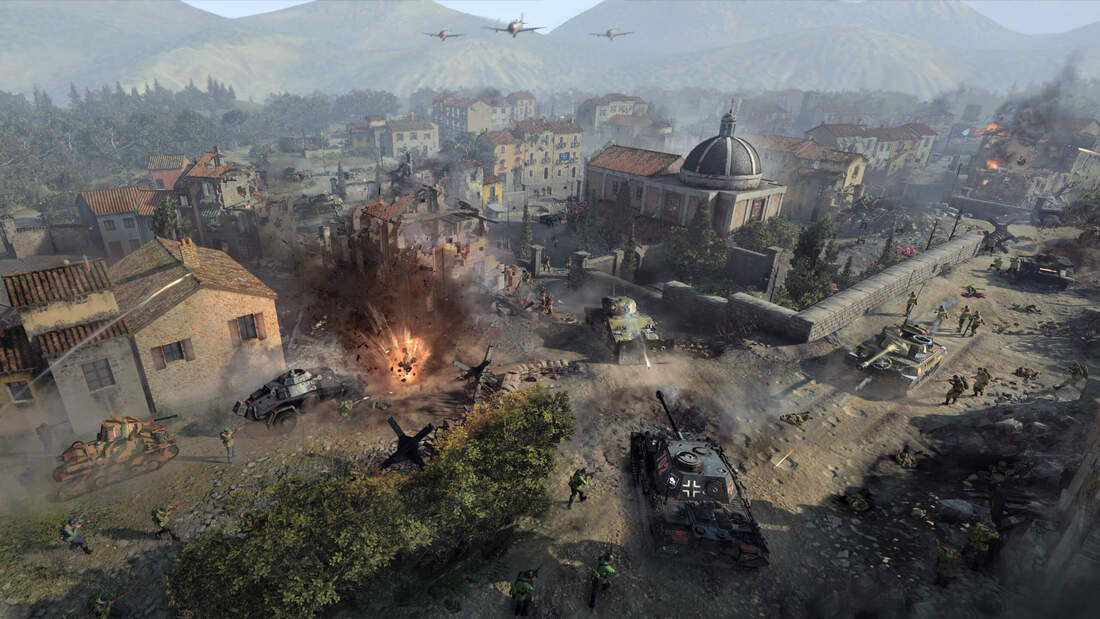


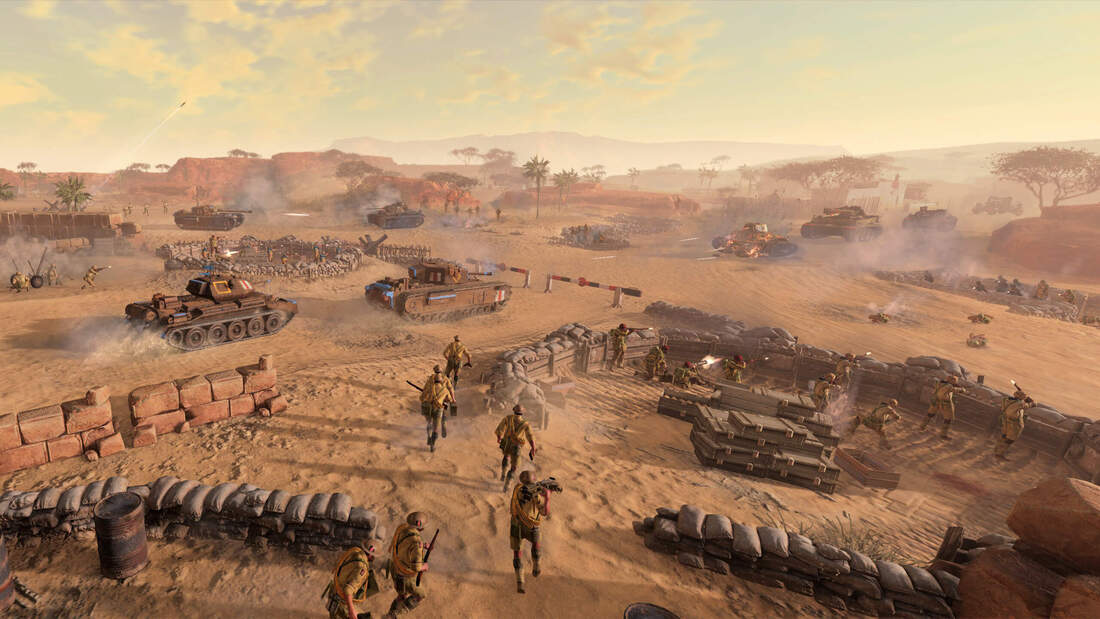
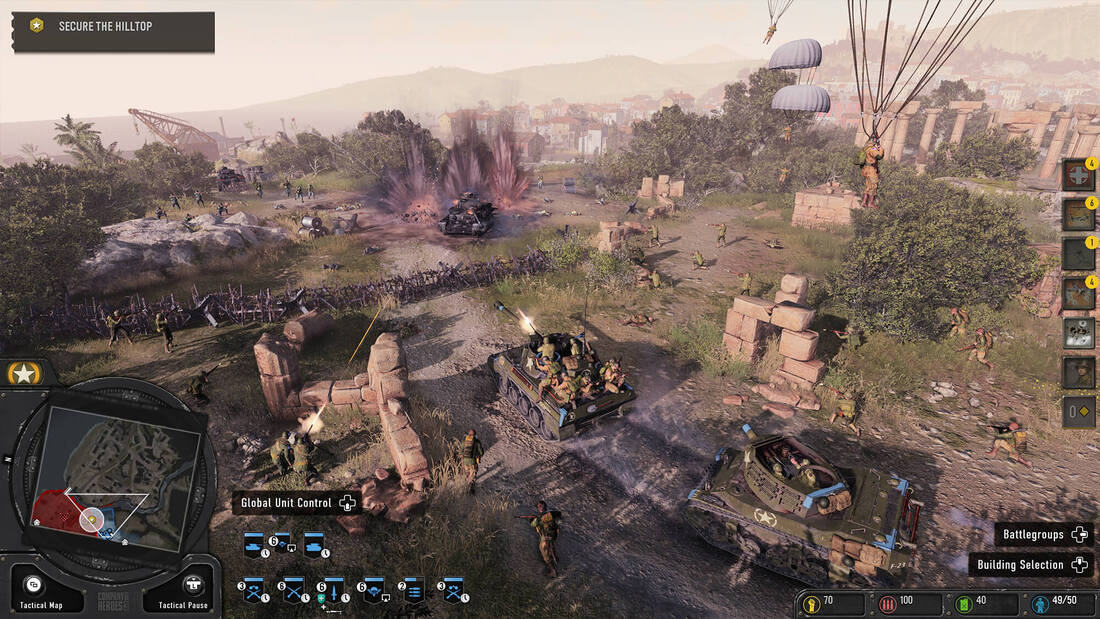
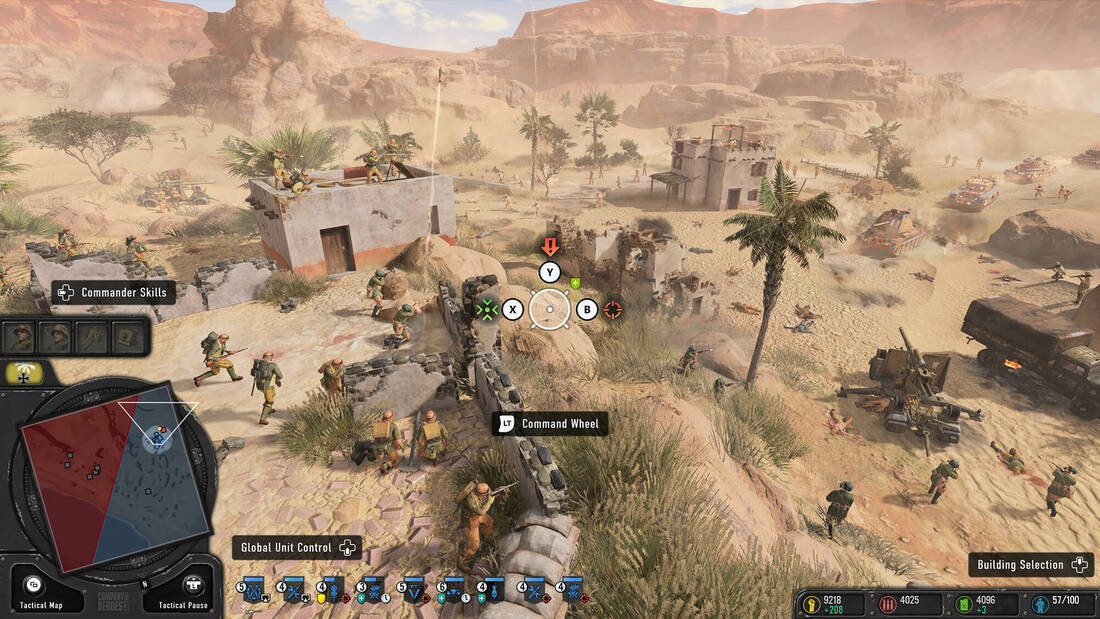
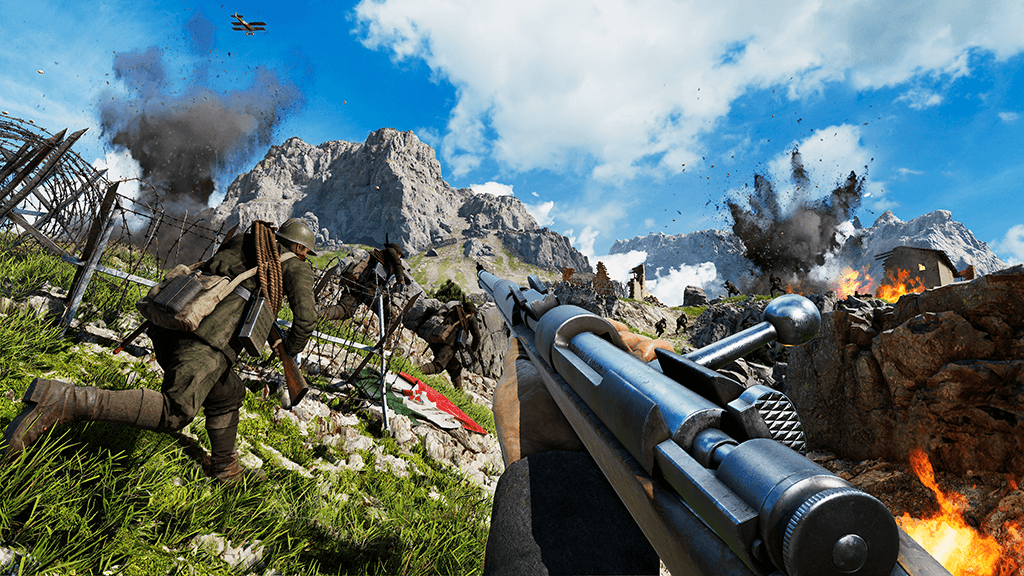



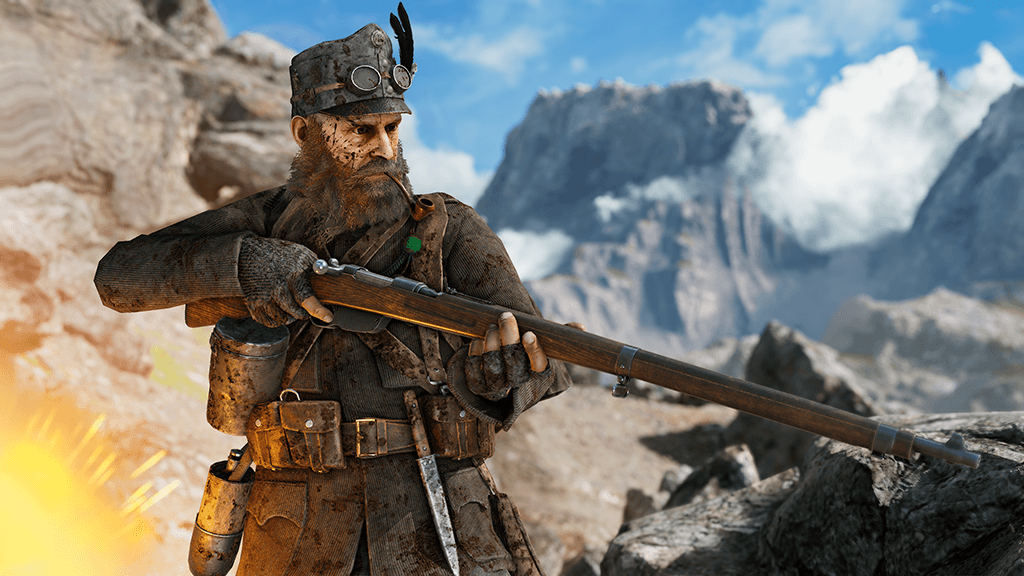
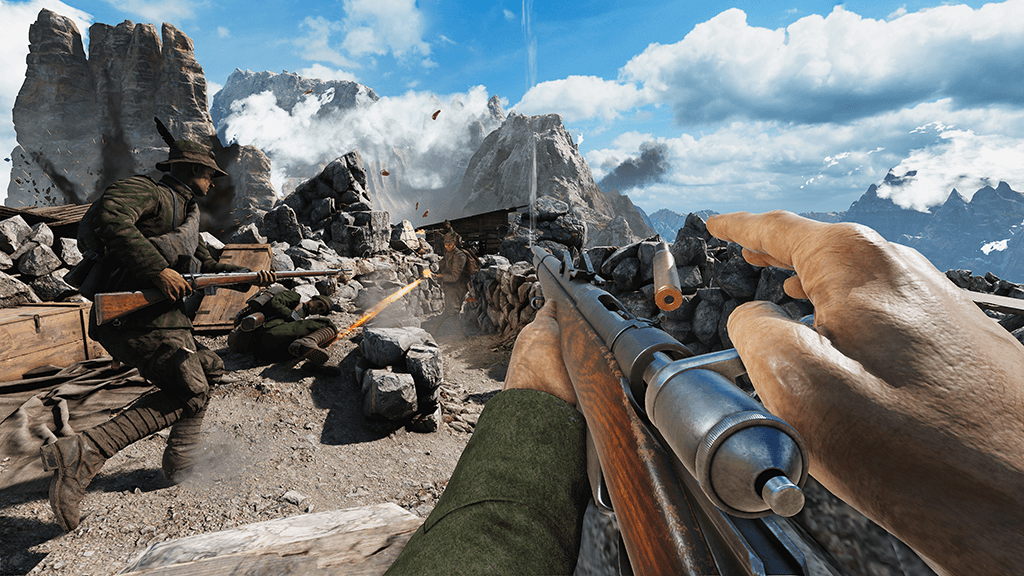
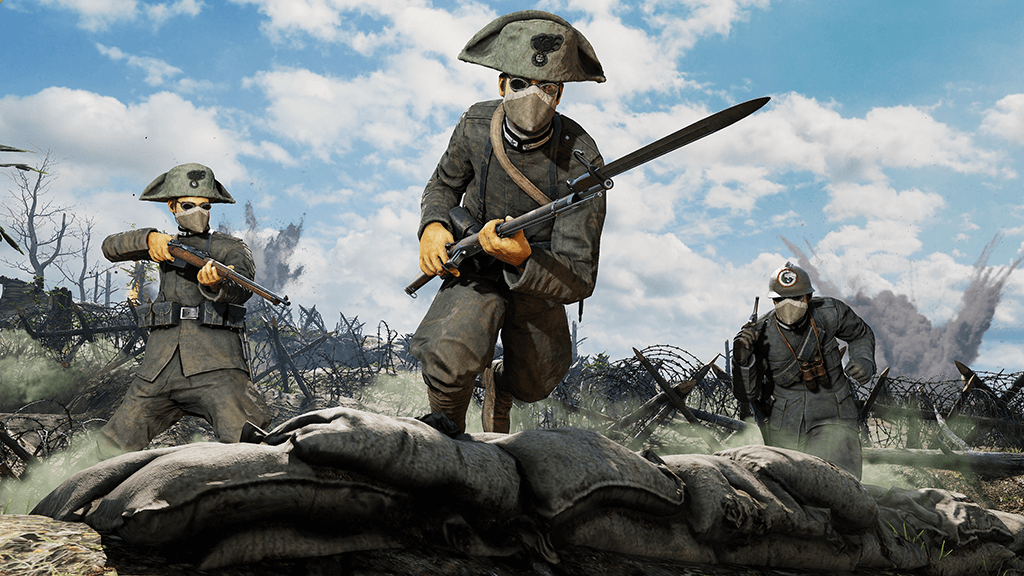
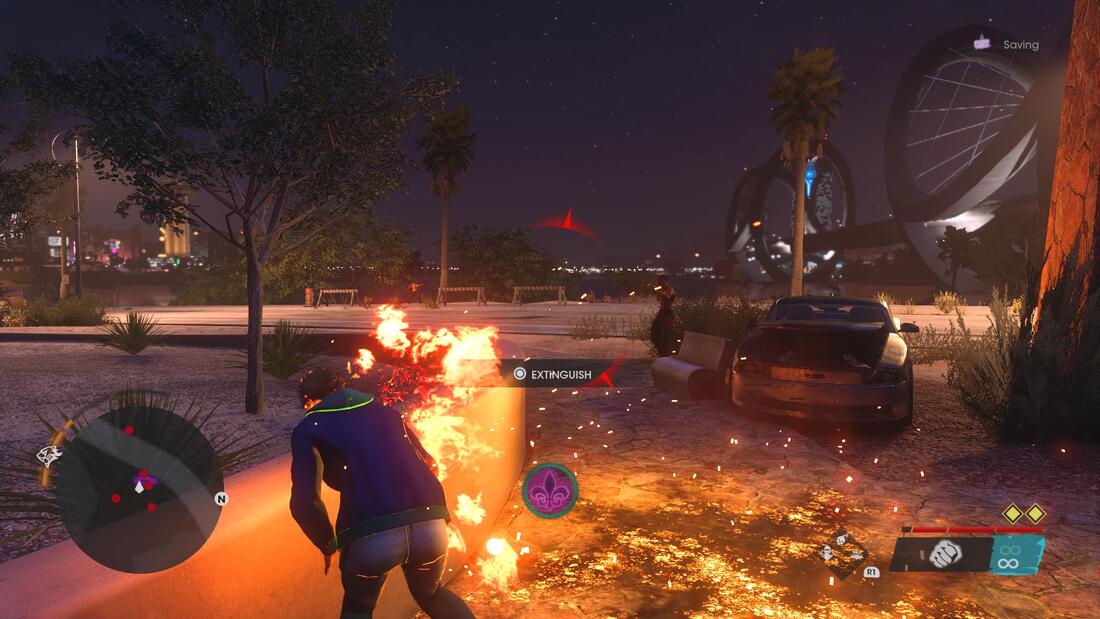



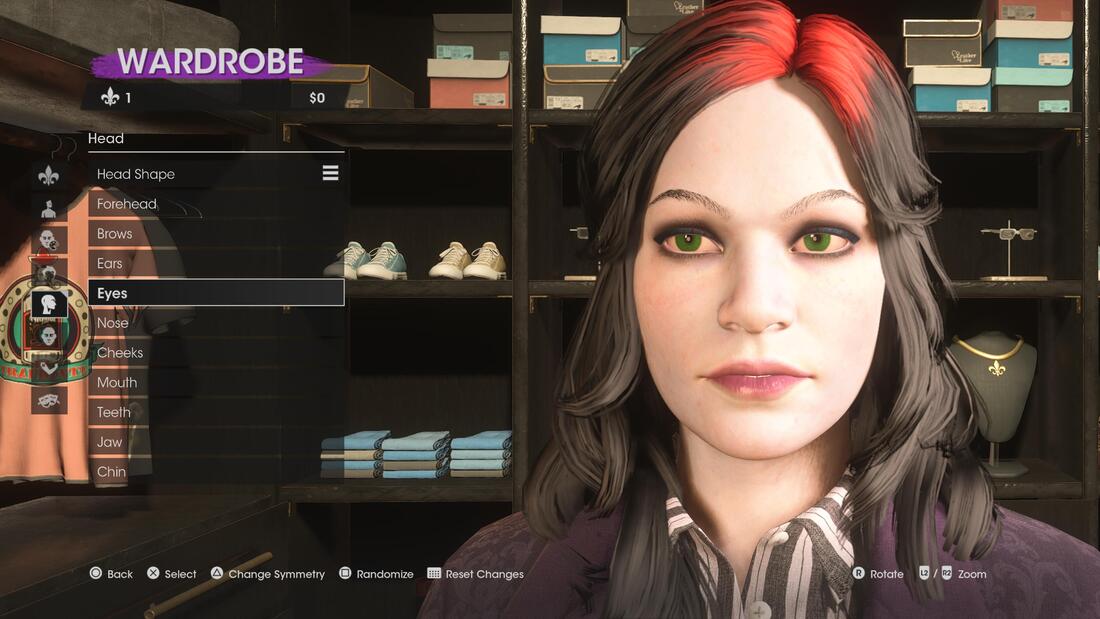
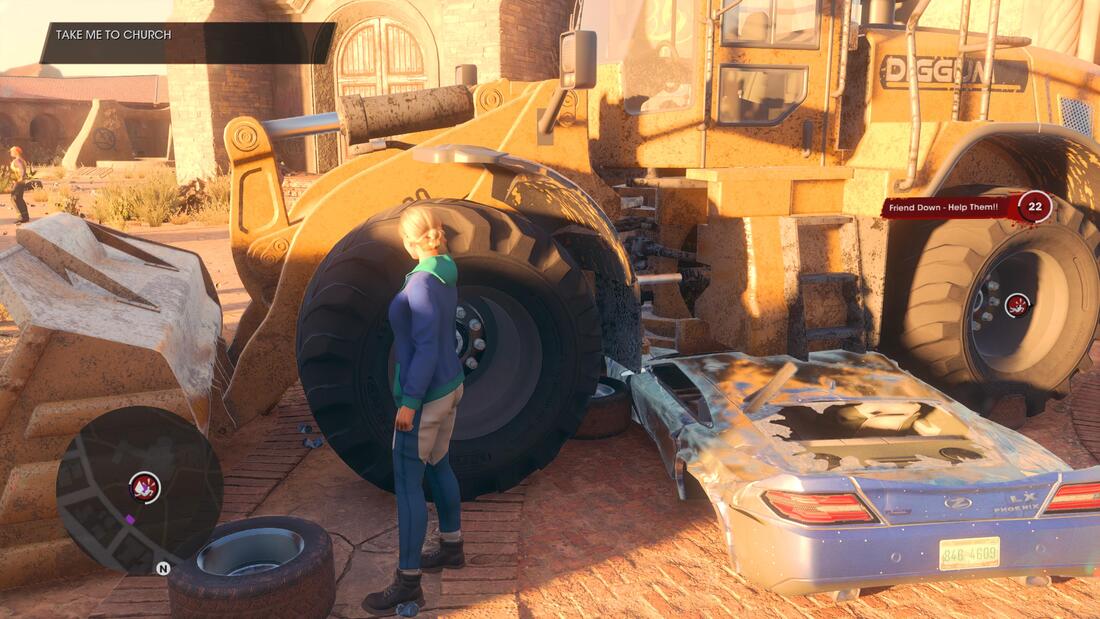
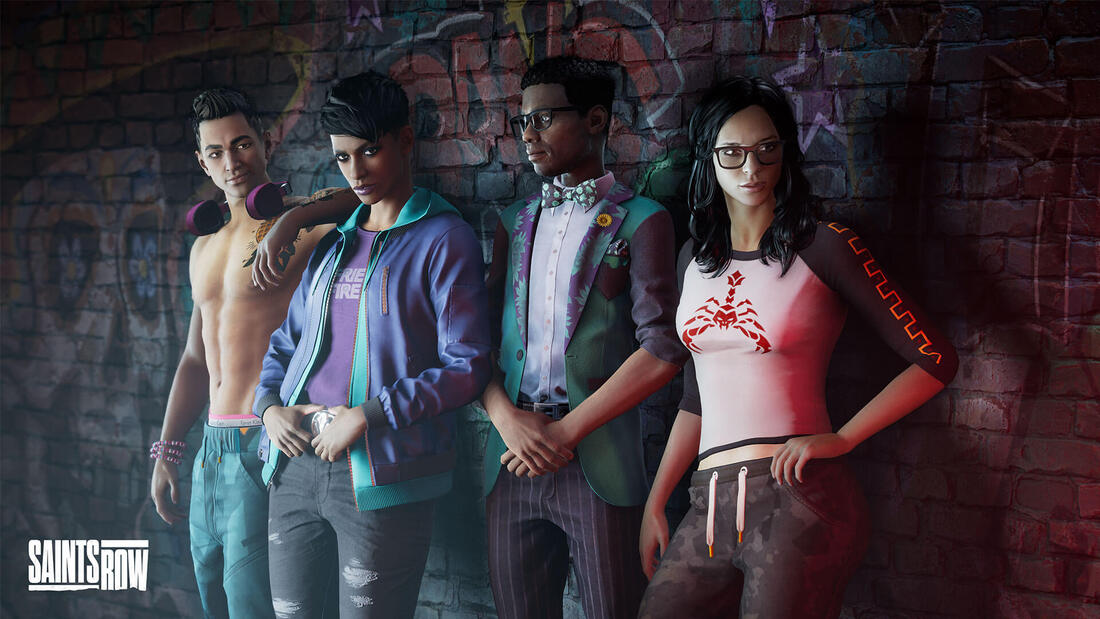
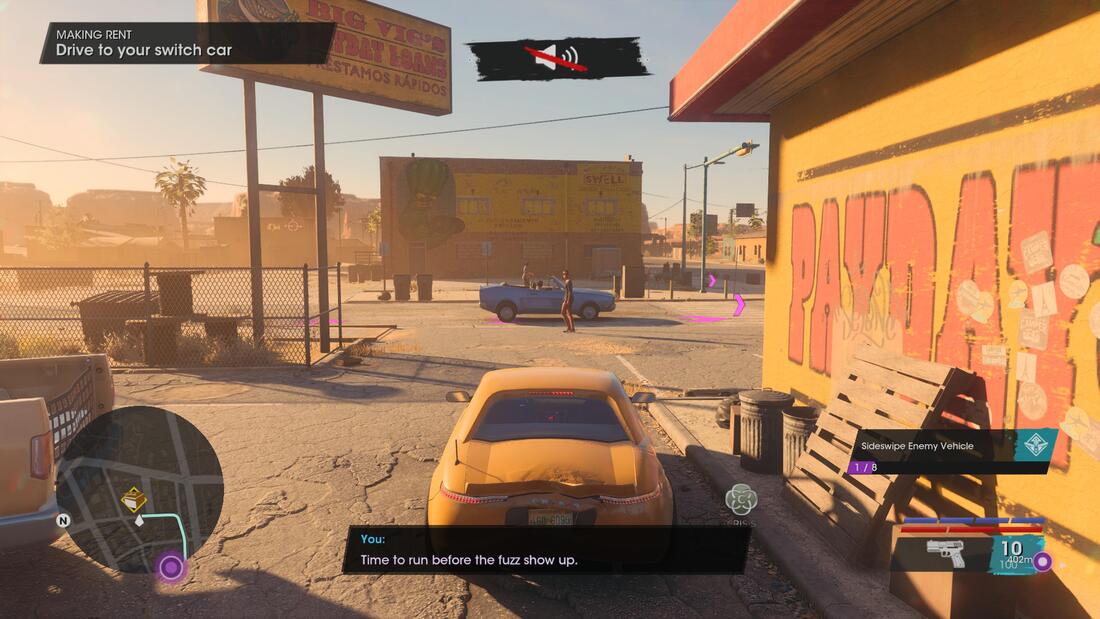
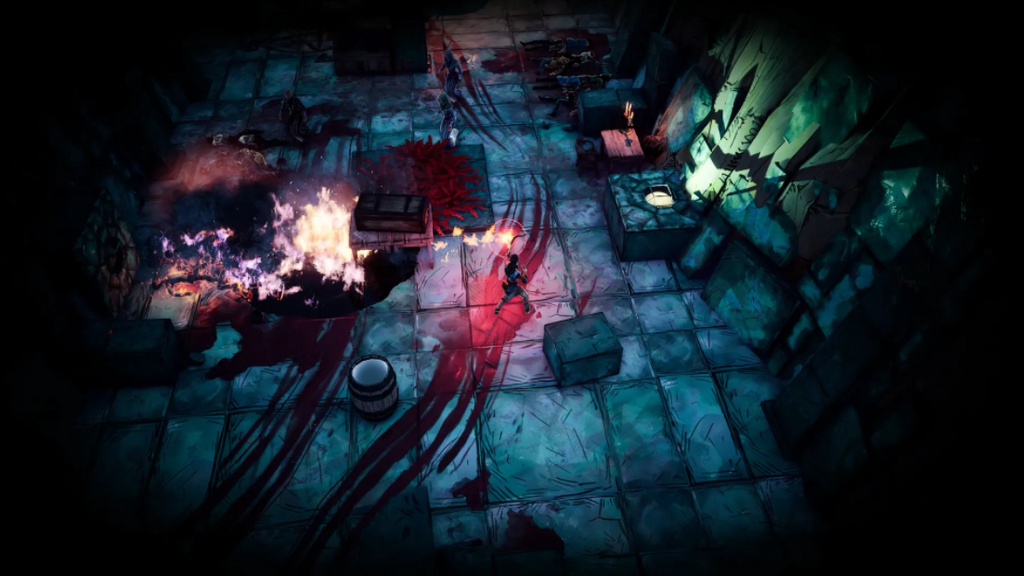



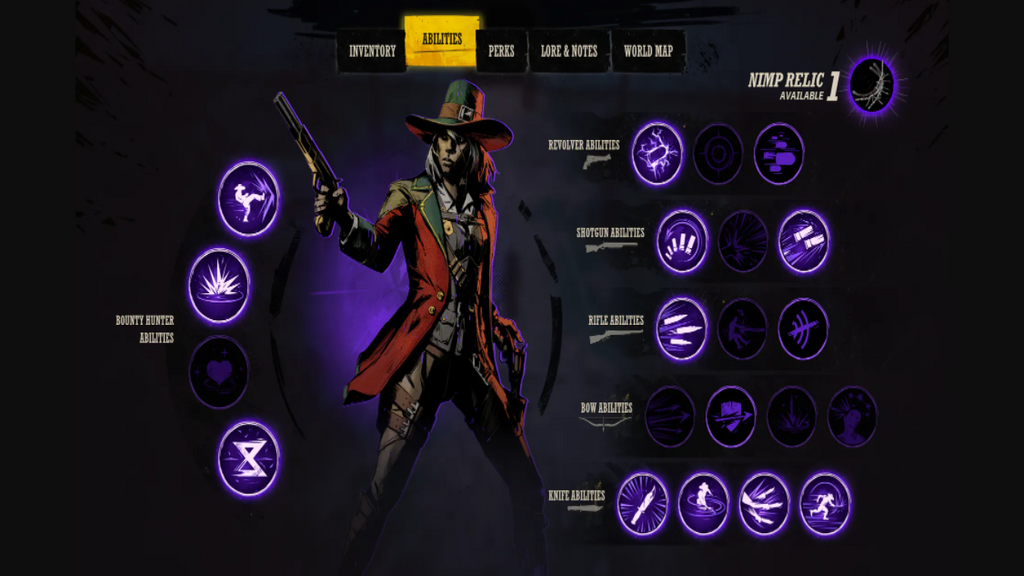



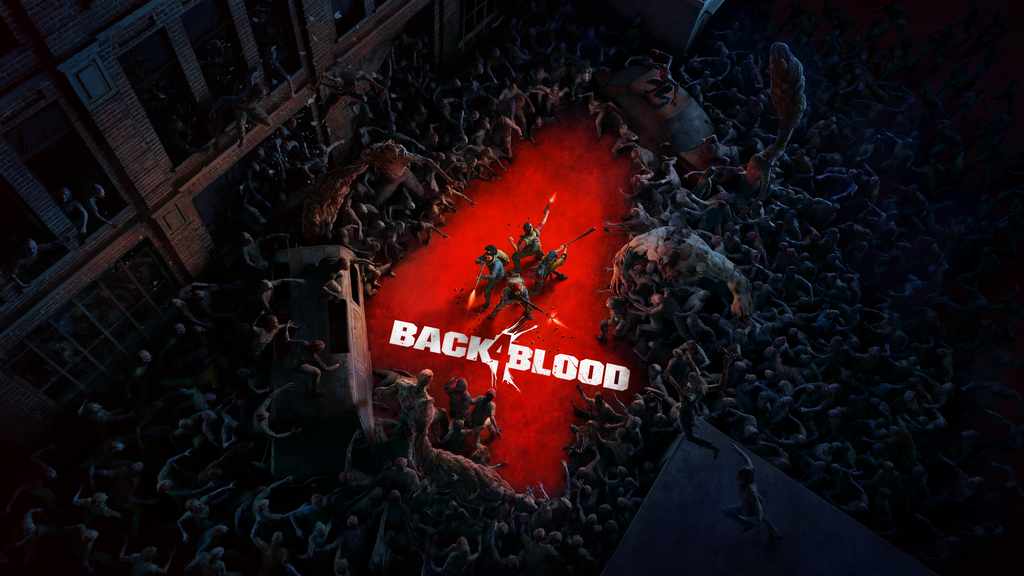
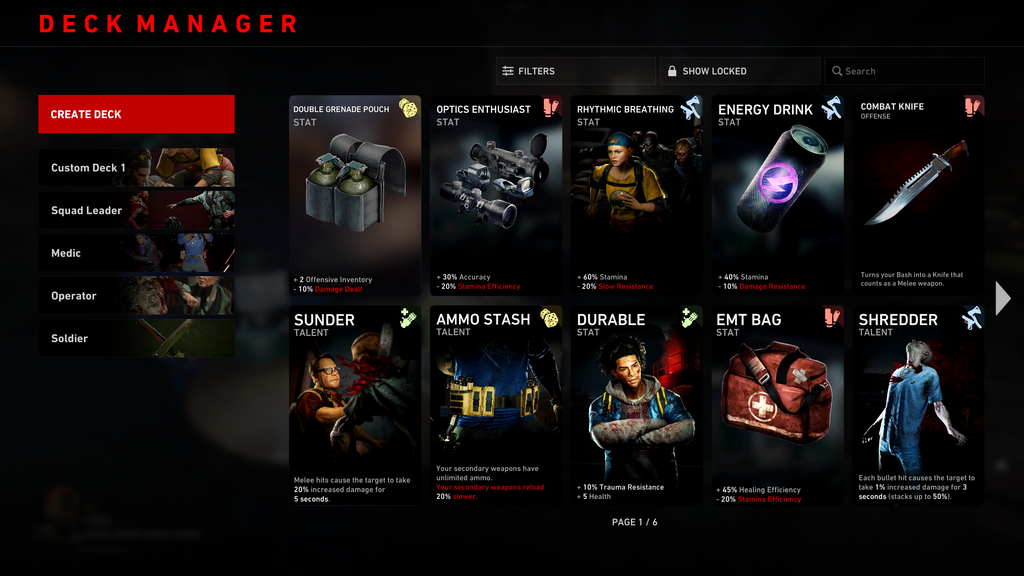
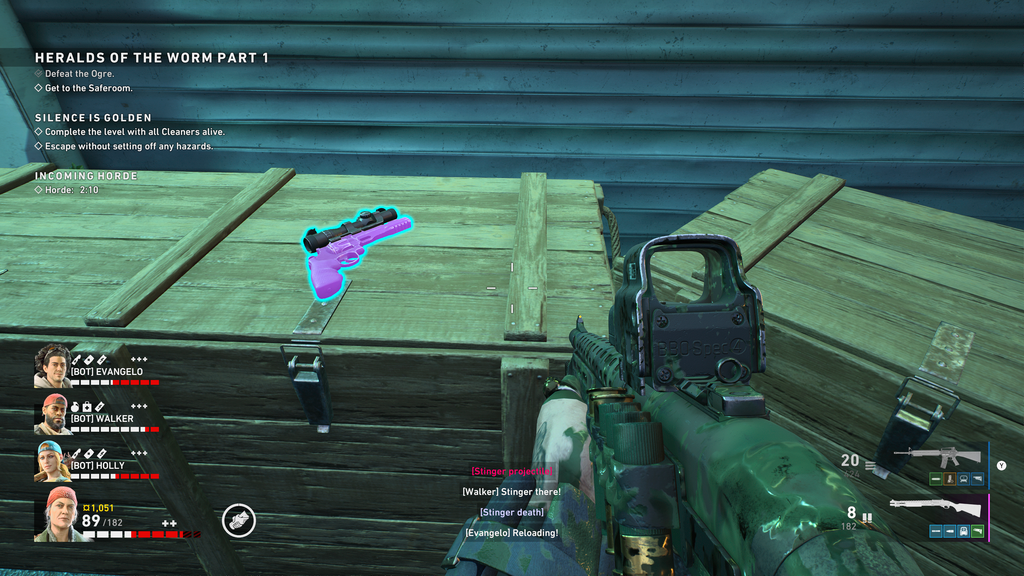
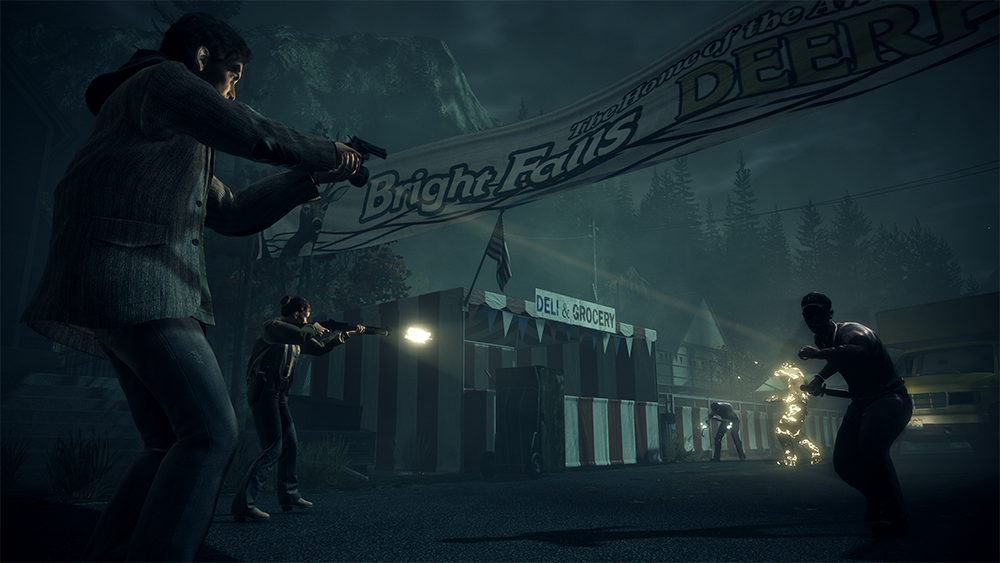




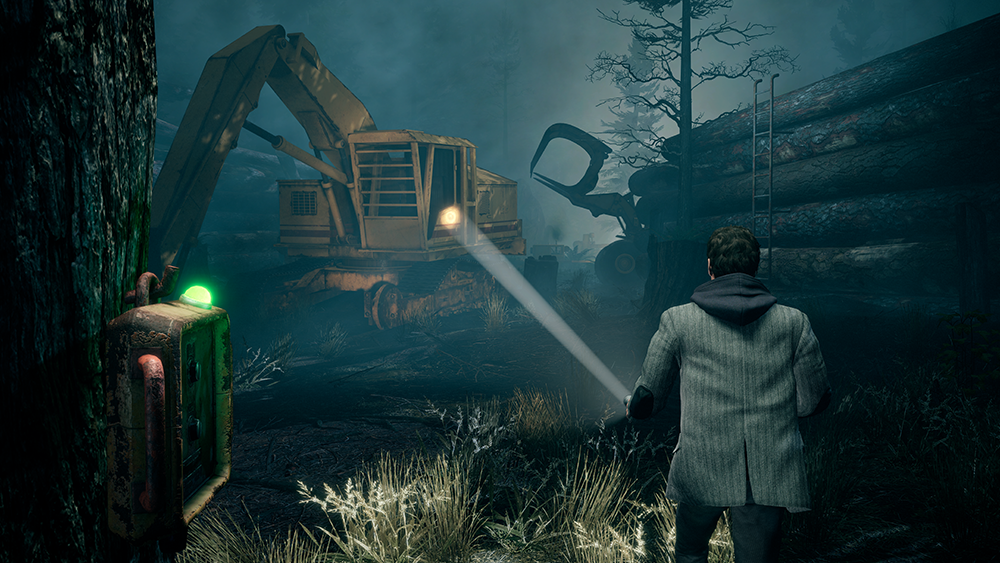
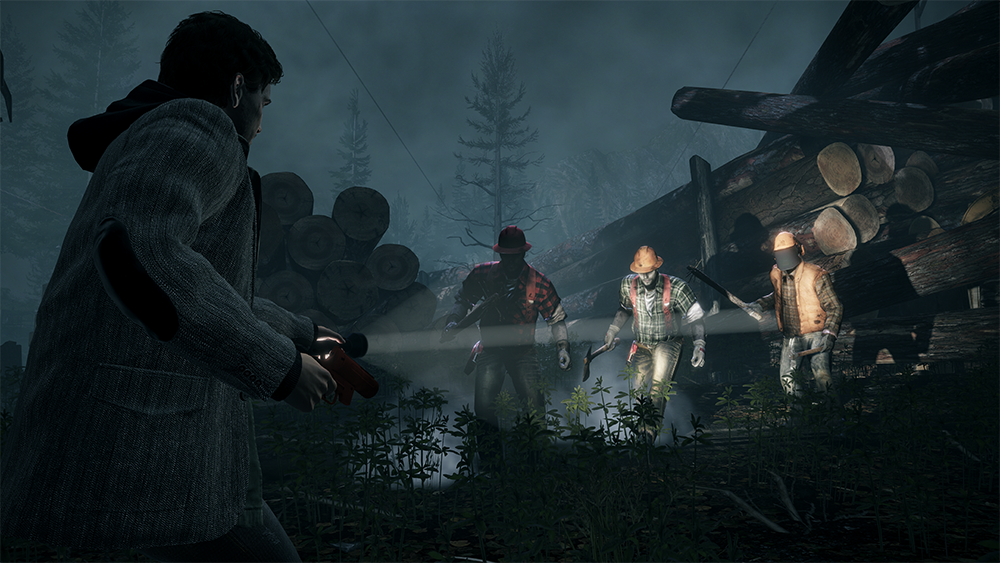
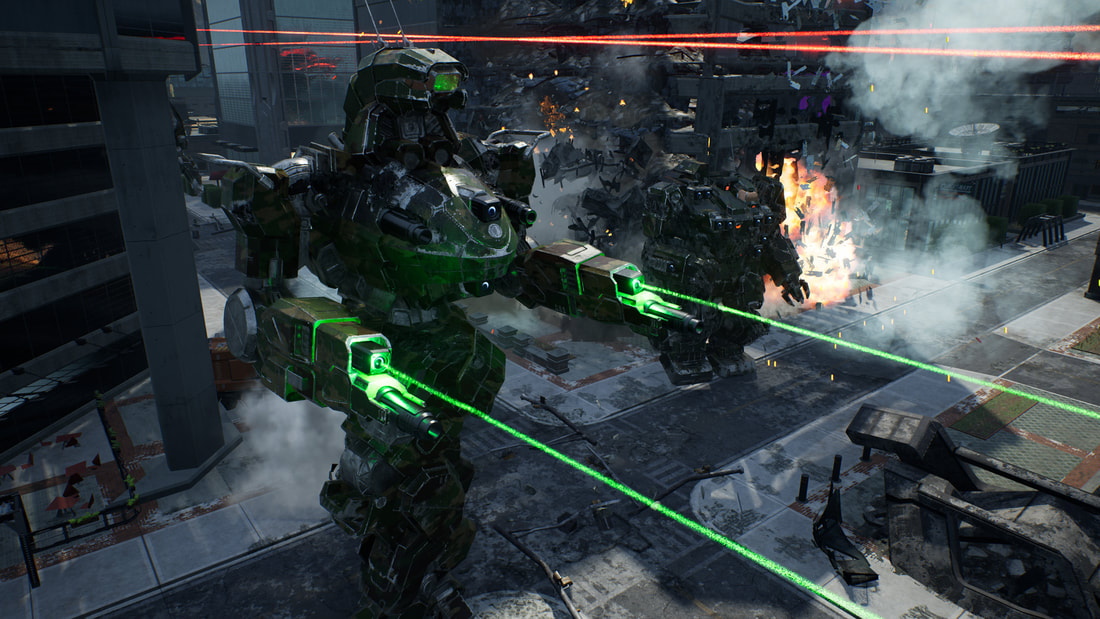


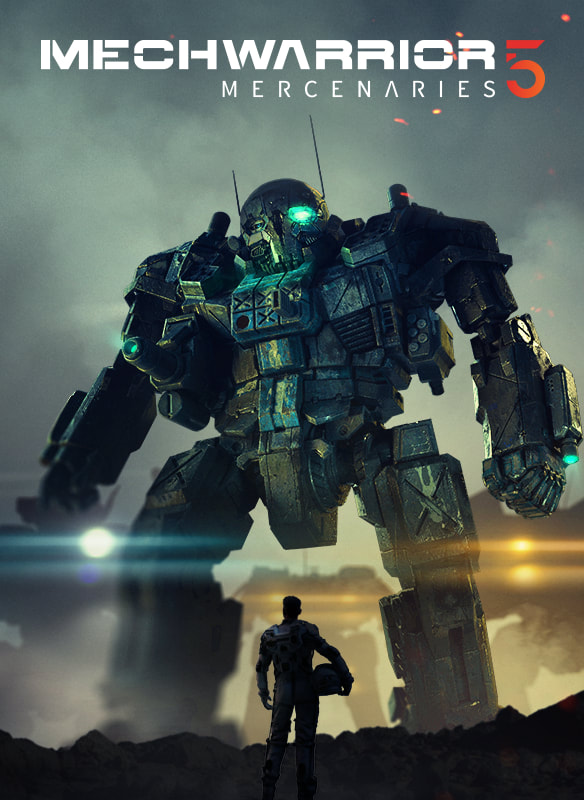
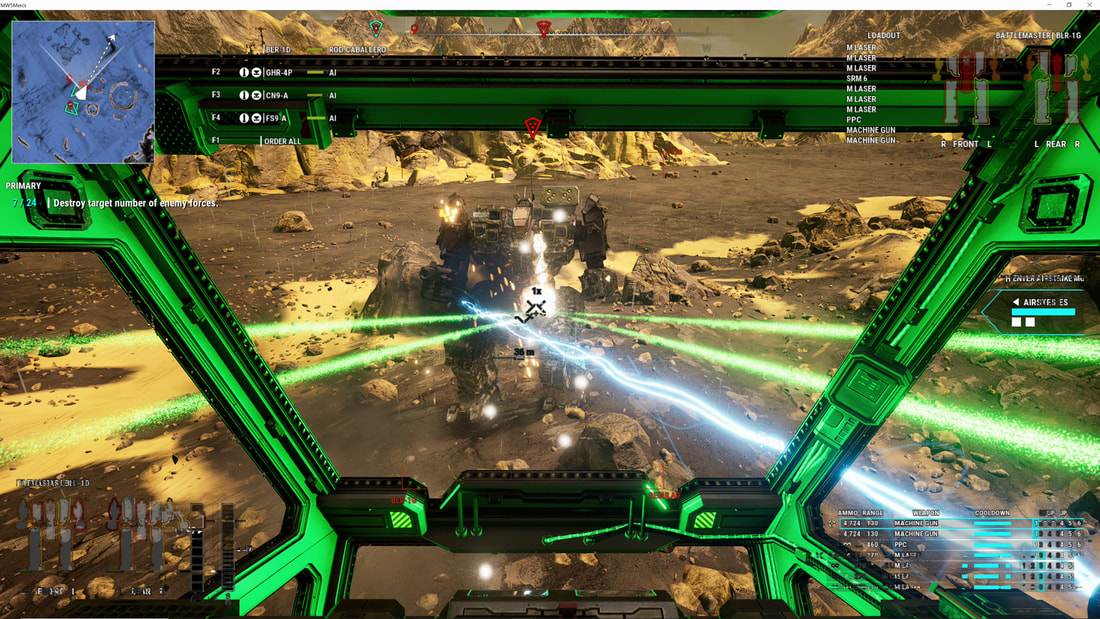
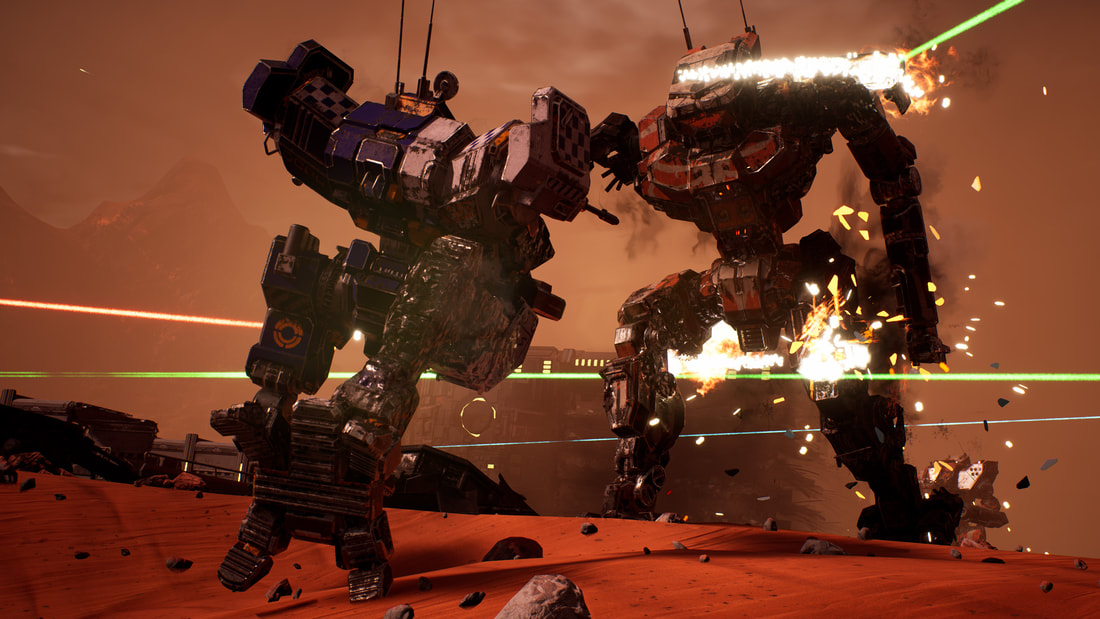
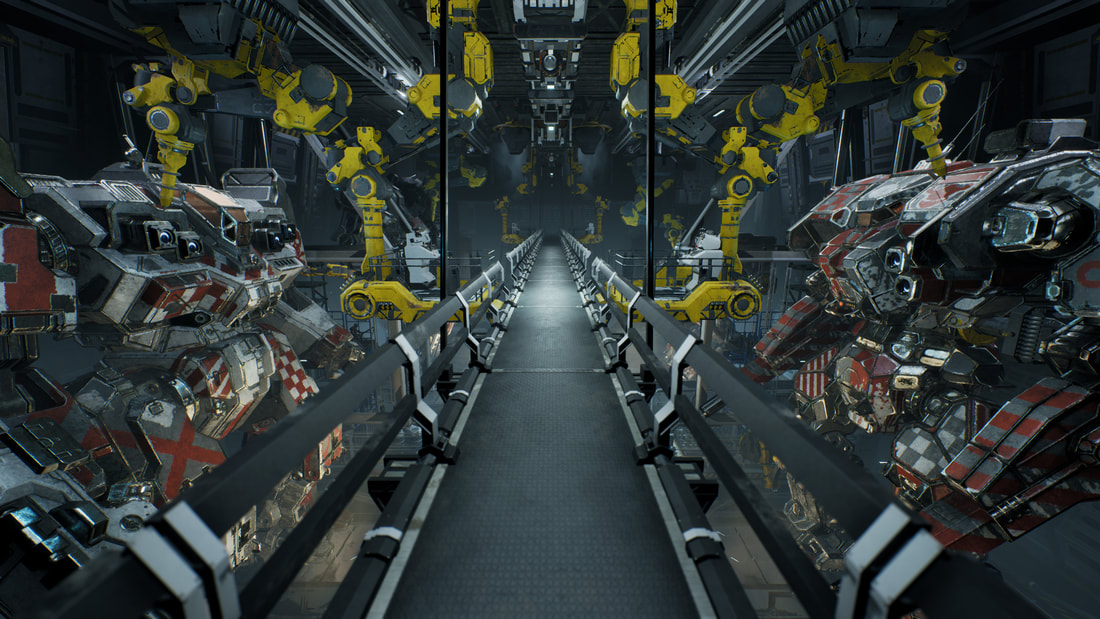
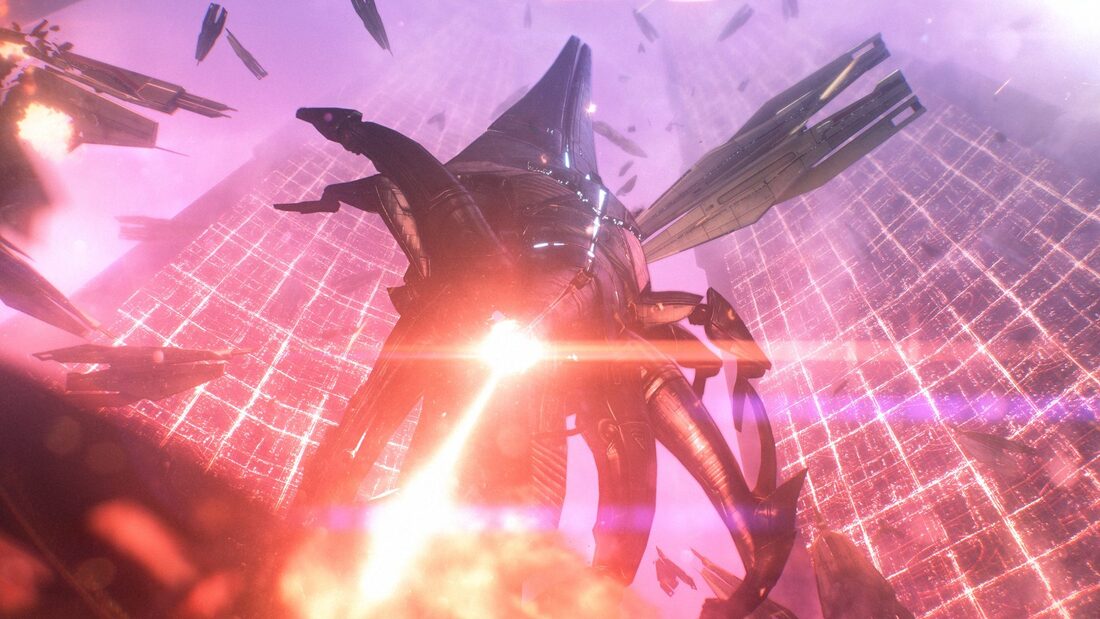



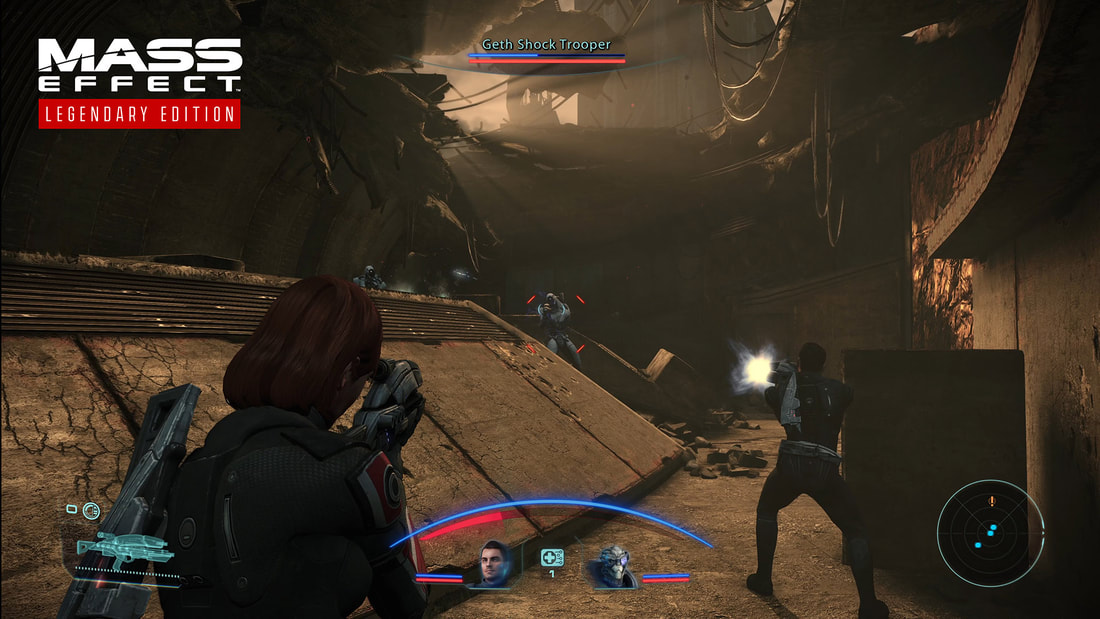
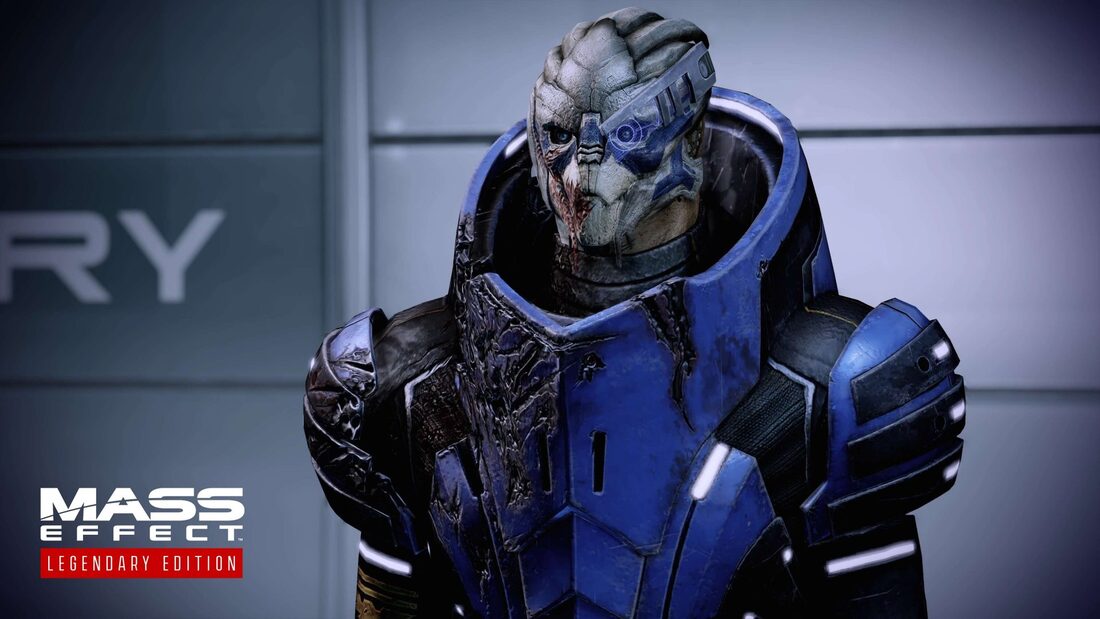

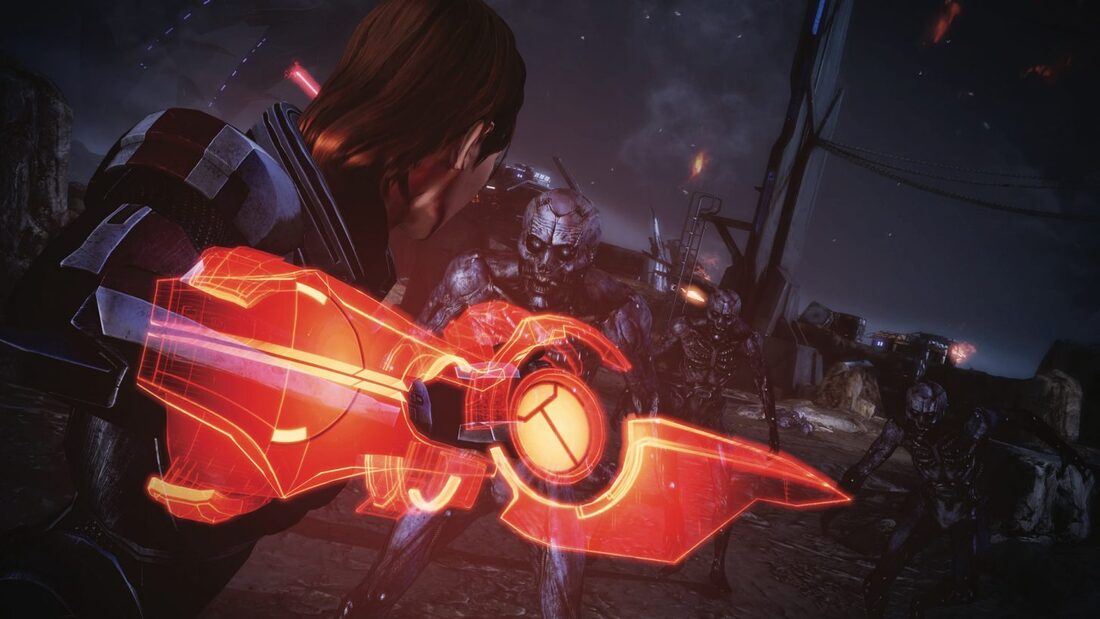
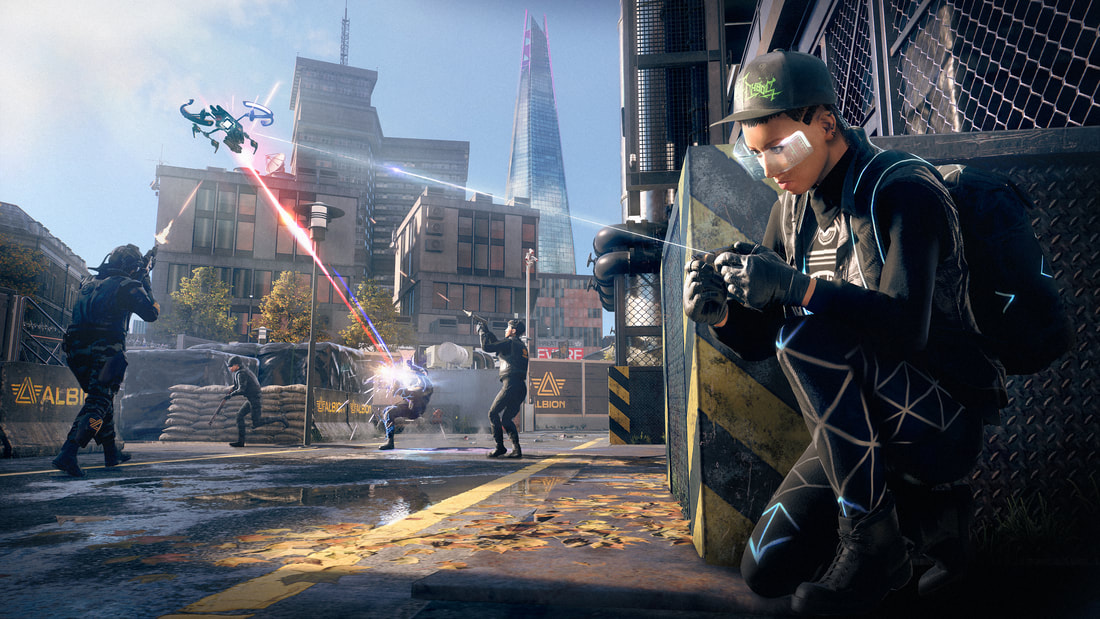



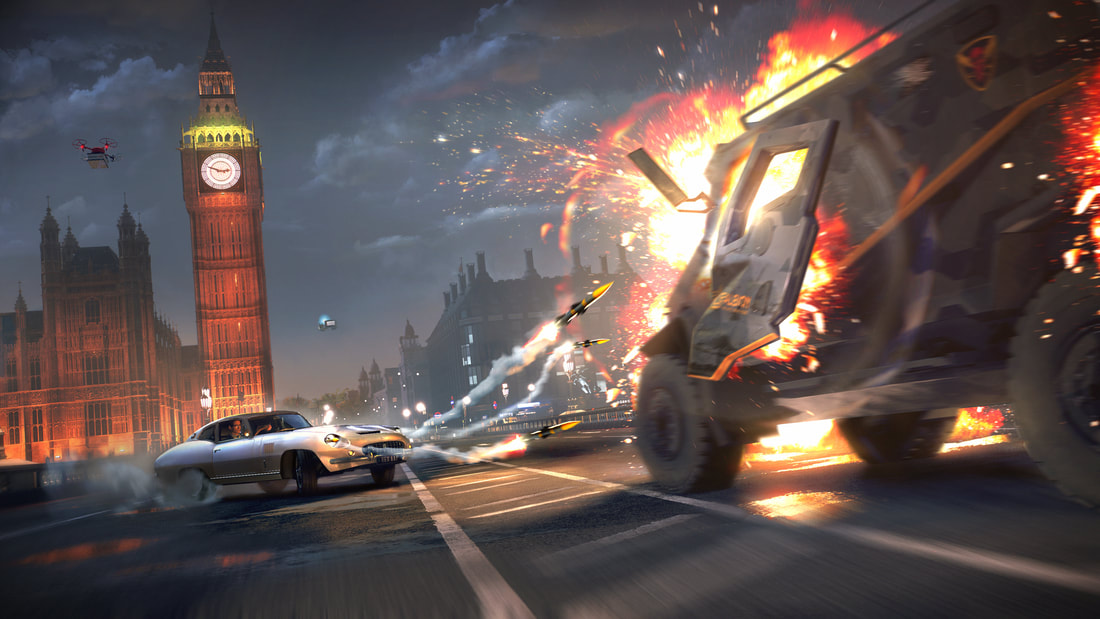




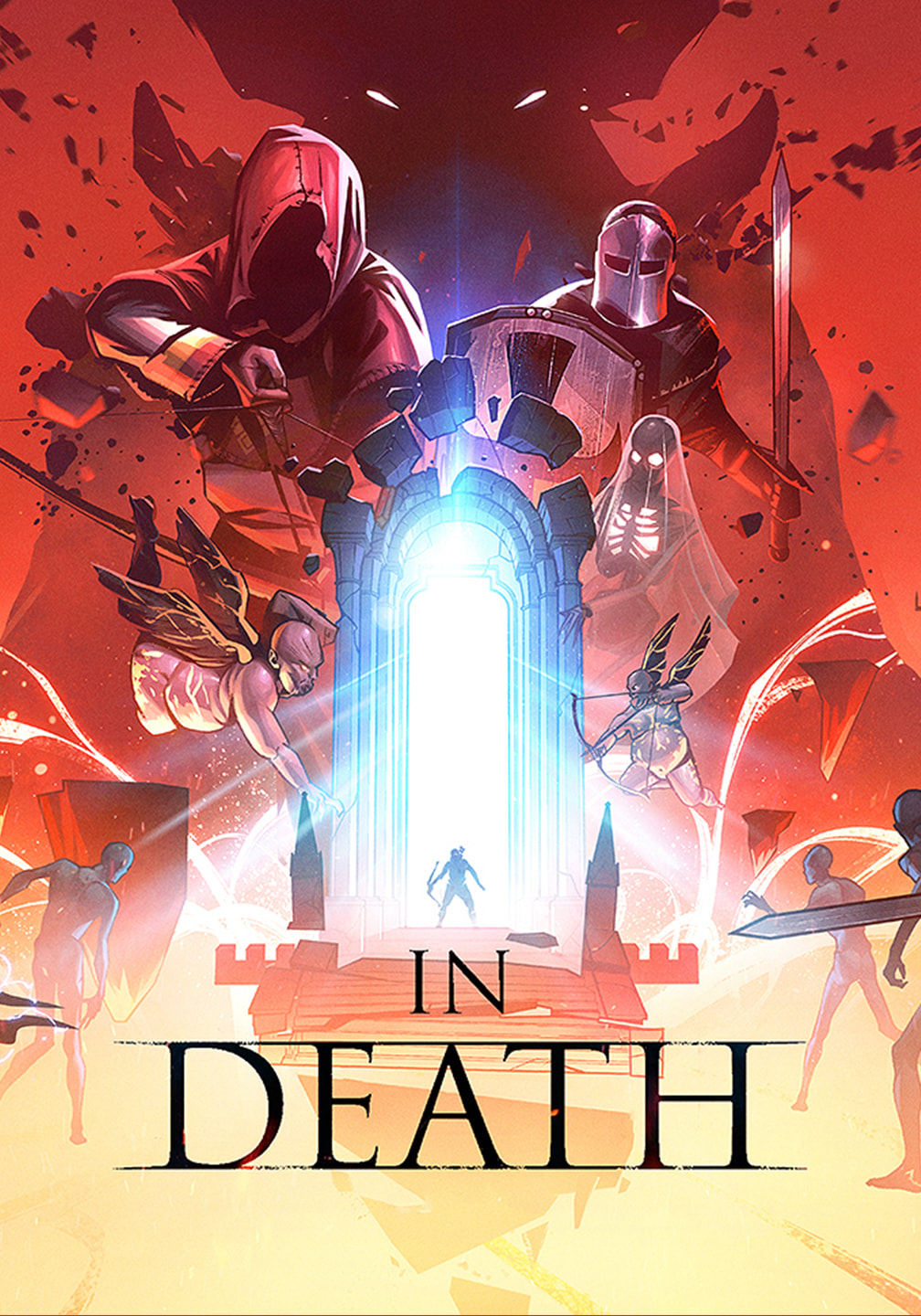

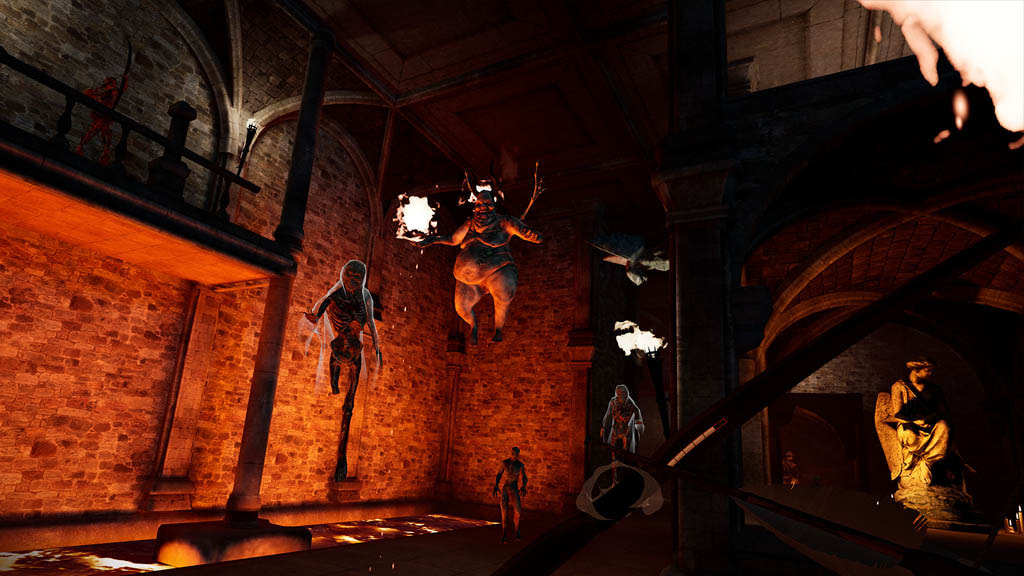
 RSS Feed
RSS Feed